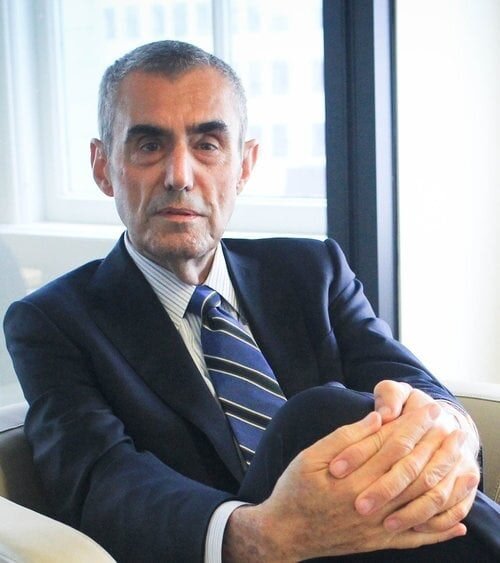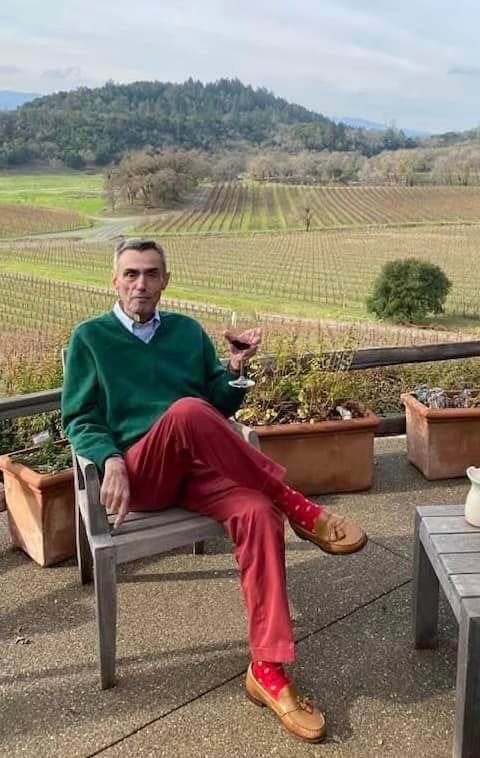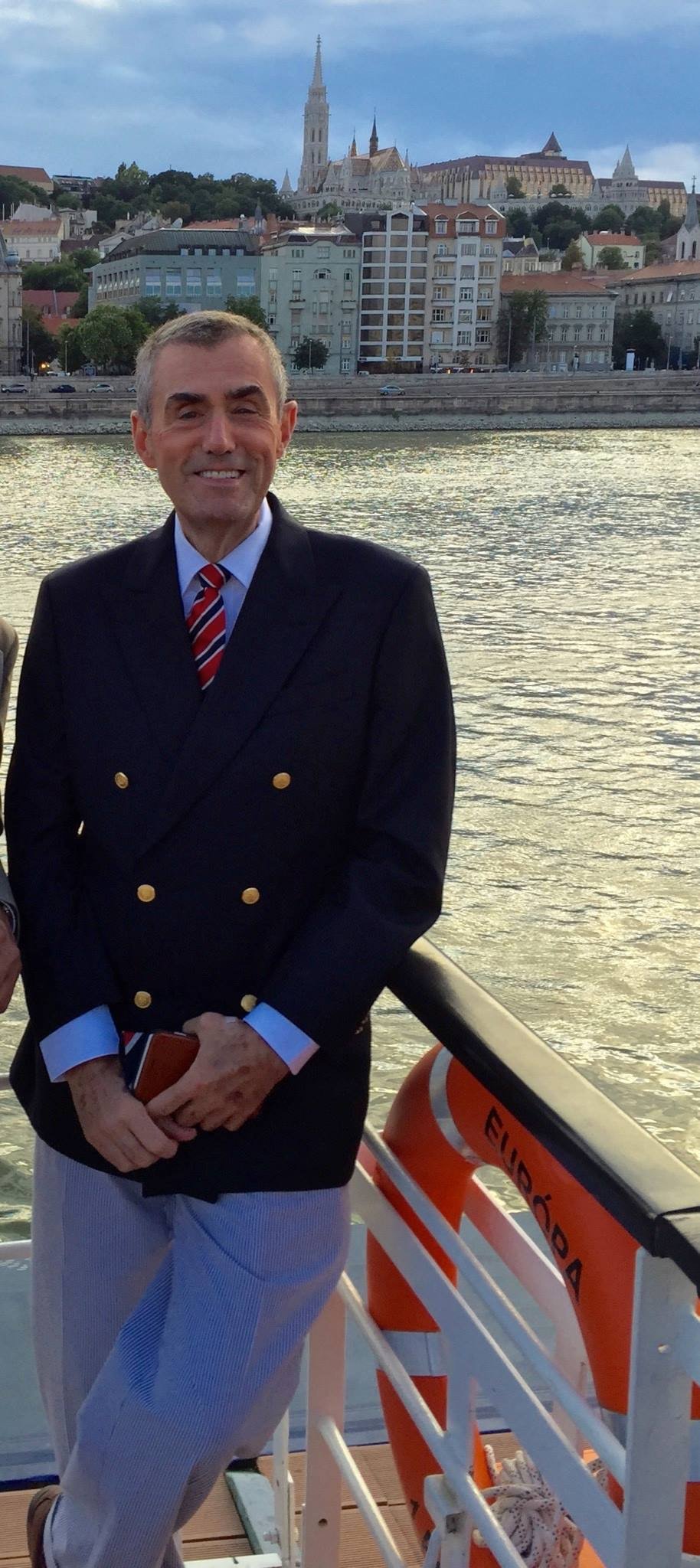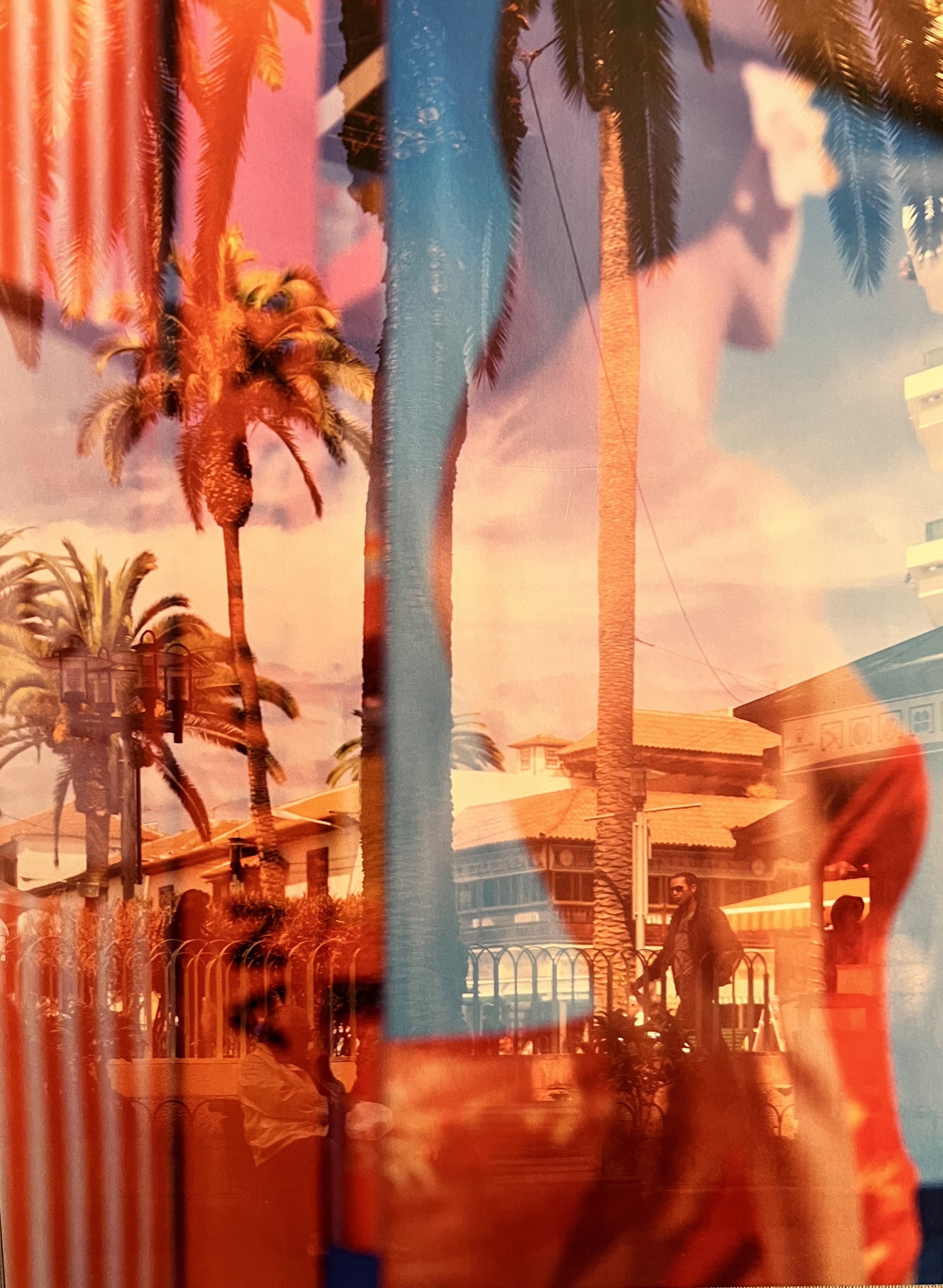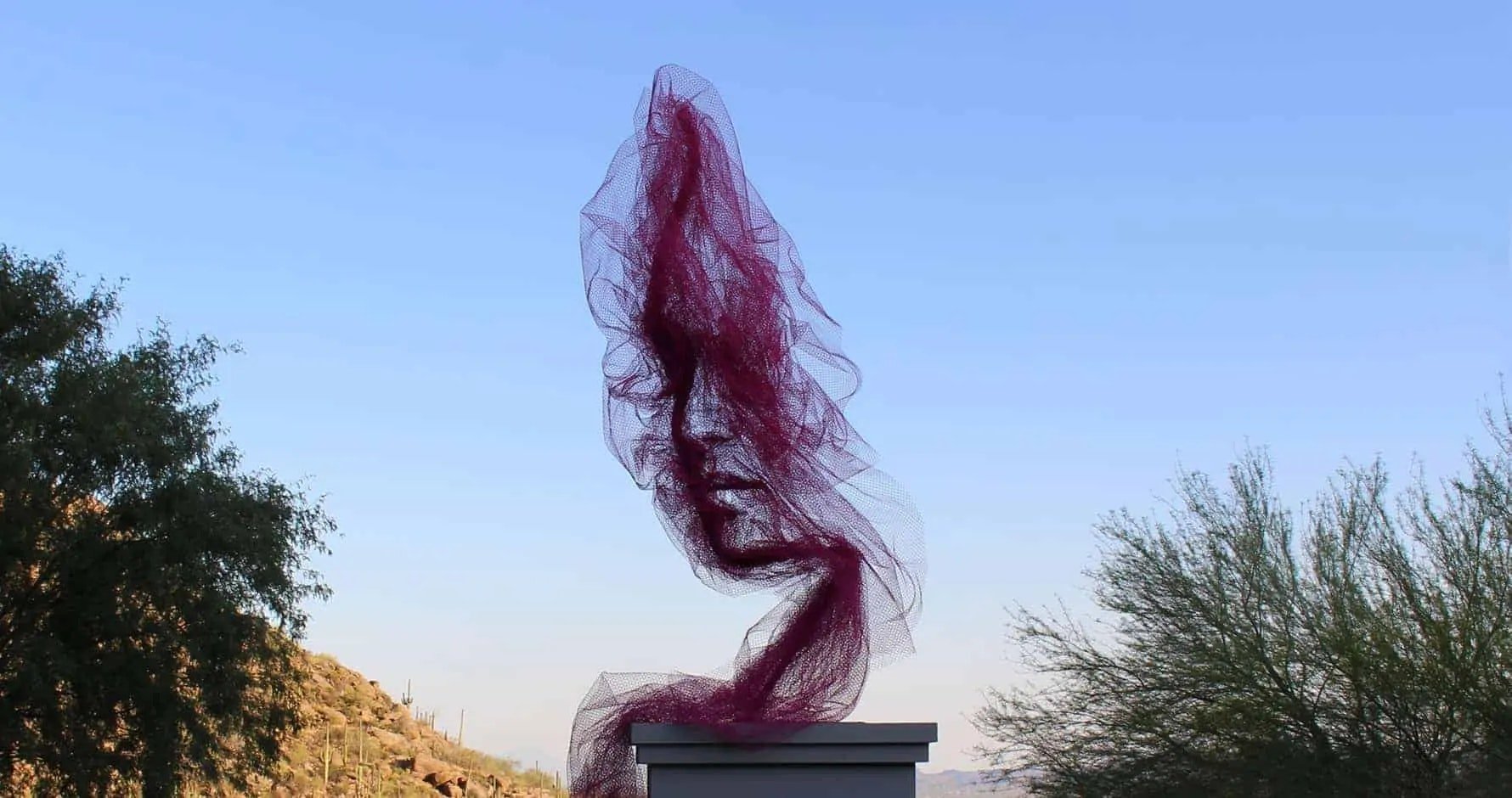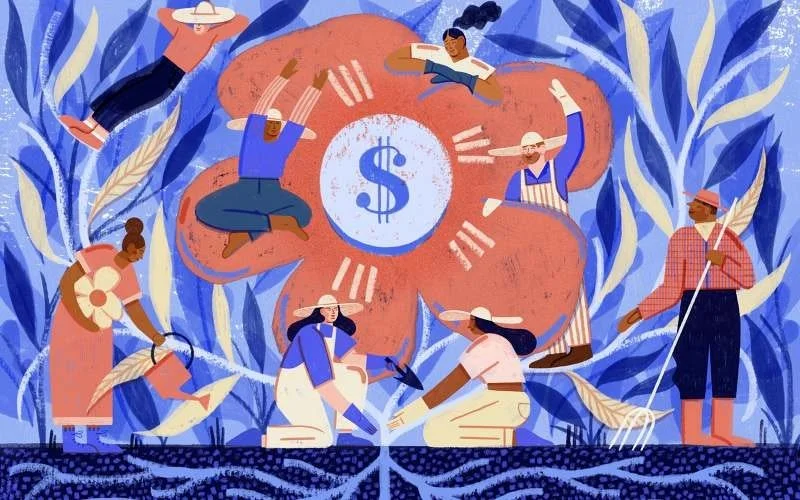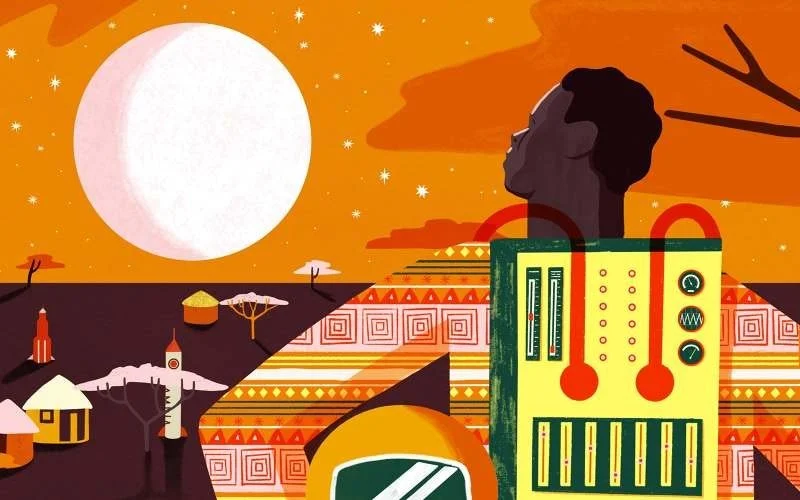“Go the extra mile. It’s never crowded.”
On Monday November 15, 2021, a gentleman named John Durham passed away in San Francisco, California after many years of struggling health.
What happened in the hours and days after news of his passing was initially shared with a list of two hundred plus of his friends would signal that someone unique, very special and very impactful was no more.
Social media flooded with tributes and stories. Here is just one feed:
https://www.facebook.com/thedurham
The email announcing the news of John Durham’s demise was so responded to and shared that Microsoft believed it was the work of a spammer and for those lucky enough to be on it looked forward to and hoped everybody would hit “reply all” every time they added a thought or their memories. Five days later the email thread continues to vibrate with ideas to honor the man, memories that stir tears and evoke laughter and unspool many anecdotes and stories.
John for over a decade would share a thought, a story, an observation, or an anecdote which came to be known as “Durhamism’s”. They were wise and they were funny. They made you hold in tears or spit out what you were drinking or eating since they were so funny. A request to sign up for a crowd sourcing project to take these writings and put them together in an electronic form prior to publication of a selection was oversubscribed within hours with CEO’s and leaders grabbing as many assignments as they could!
If the measure of a man is the lives he has touched, there is no tape or ruler long or deep enough to measure the impact of John Durham.
John was in many ways the fabric that connected and weaved together a global diaspora of what initially were digital marketing and media pioneers but grew to include people of every stripe from CEOs to students across industries and the globe.
I was one of those lucky to know John Durham. We were far more connected in the last two years of his life brought together by his being a generous champion of my writing and thinking which he asked me to leverage to the benefit of the many communities he cared about from University of San Francisco to the San Francisco Bay Area Interactive Group to his clients at SF Catalyst and many more. Almost every Sunday, he would write me kind words after he read this weekly thought letter.
Many people knew him much longer and far better and interacted with him almost daily and I have now begun to suspect there may have been many John Durham’s because surely one individual could not be so much to so many!
He was friend, mentor, counselor, teacher, advisor, family member.
And he was their sommelier, their sports buddy, their fellow traveler and the one who made them laugh.
The container that molded John was broken when he was born and we are unlikely to see someone like him again in the future, but his teachings can help guide us forward.
Here are just a few:
1. Be kind.
Durhamism #1117: “Kindness, like a boomerang, always returns. The kindest word in all the world is the unkind word, unsaid.”
George Saunders wrote “err in the direction of kindness”
John Durham erred so much in the direction he would be put in detention for life if there was a prison for the most kind.
But John showed that kindness was the key to unlocking everything and everybody and we all remember the little and big acts of grace, courtesy, and attention we got from him.
2. Be generous.
Durhamism # 1140: “Go the extra mile. It’s never crowded.”
Along with kindness the word and feeling that ran through John’s life and the tributes to him was his generosity.
He was always there for everybody.
And he was there before you knew you needed him.
A few weeks before my book was published John reached out of the blue and asked if he could hold an event in San Francisco. Typically, he phrased it in a way that he thought I was doing him a favor in supporting the San Francisco Bay Area Interactive Group by creating an event around the book launch! He got a sold-out crowd with so many leaders who had come for the Godfather and for “The Durham”, but John shone that spotlight on me.
Class act after class act of giving (including lots and lots of fine wine for the smallest of favors) and helping was his story.
3. Be grateful.
Durhamism #510: "What often screws us up the most in life is the picture in our head of how it's supposed to be. And the reason so many of us give up is because we tend to look at how far we still have to go, instead of how far we have come. Remember, life is a journey, not a destination. This moment, like every moment, is a priceless gift and an opportunity. Be positive, smile, and make it count. Pretend today is going to be great. Do so, and it will be. Research shows that although we think that we act because of the way we feel, in fact, we often feel because of the way we act. A great attitude always leads to great experiences.
John was a man who was increasingly sensitive to the finer shade of differences.
From a conversation to a fine libation to every interaction there was infused a sense of joy and of presence.
To be alive. To be there. To experience.
Gratitude.
4. Laugh! Laugh at life.Laugh at yourself.
John despite all his kindness and generosity had standards and could like all of us get angry and did not suffer fools. Here are two perspectives on this from funny to deep.
Durhamism #288: “Life is all about ass. You’re either covering it, kicking it, kissing it, busting it, trying to get a piece of it or behaving like one”
Durhamism# 2849: “The most wasted of all days is that in which we have not laughed. A man who can laugh, if only at himself is never really miserable. Laughter is the soul’s health; moroseness is its poison. Laughter is therapy for physical pain, emotional pain, and the everyday pain of life.”
5. Live deeply and with a sense of wonder.
For many years in his last decade John struggled with his health. There were many days he was in pain, but he was with almost everyone stoic and wanted to know about them and how they were. The passage of time and the shortness of life infused the way he lived.
In an interview he was asked about happiness.
What is happiness to you?
“I used to think about it a lot. I think happiness is what you enjoy doing; how you spend your day; what kind of people you associate with – both in work and in your personal life; the experience you have and how you think about all the things that you do, and the people surround you; places you’ve been to and places you want to visit.
My happiness is: number one, waking up every morning knowing that I am healthy. That means I care about my health and try to be healthy. Number two: doing something good every day. I want to smile every day. I think if you don’t smile, if you go to bed without a smile, your heart hurts. That means I care about smiling once or twice. I want to laugh once or twice a day. Some days I want to cry; sometimes I cry for happiness, sometimes for sadness.
I don’t believe you can be happy until you experience some negative things to appreciate what you do have. Happiness is the appreciation of things you have in life, and I do.
When I die, I want people to say: He was a good person, he was fun to be around, he shared his thoughts, ideas and believes, he cared about people, and he gave only good. That would be a very happy tombstone.”
If you are to give one advice to other people to be happy, what would that be?
“Appreciate every moment, everything, everybody, every day. When you do – it is breathtaking; you can never capture it again.”
Photographs by friends of John Durham.
Escape Velocity
In physics, escape velocity or escape speed is the minimum speed needed for a free, non-propelled object to escape from the gravitational influence of a primary body, thus reaching and infinite distance from it. Wikipedia
The dawn of a new mindset.
More than 4.4 million workers quit their jobs voluntarily in September, the Labor Department said Friday. That was up from 4.3 million in August and was the most in the two decades the government has been keeping track. New York Times
A May survey of 1,000 U.S. adults showed that 39% would consider quitting if their employers weren’t flexible about remote work. The generational difference is clear: Among millennials and Gen Z, that figure was 49%, according to the poll by Morning Consult on behalf of Bloomberg News. Bloomberg News.
Web 3.0 will bring us a fairer internet by enabling the individual to be a sovereign. True sovereignty implies owning and being able to control who profits from one’s time and information. Web 3.0’s decentralized blockchain protocol will enable individuals to connect to an internet where they can own and be properly compensated for their time and data, eclipsing an exploitative and unjust web, where giant, centralized repositories are the only ones that own and profit from it. Forbes.
The future is escaping from the containers of the past.
The office and the nature of today’s firms are probably containers of the past as power moves to talent, the cloud and to the edge.
Mark Zuckerberg is aware that the Facebook of today is a container of the past as he seeks his own escape velocity into the metaverse.
Media companies and content owners are working to re-invent themselves not just because the content is now free from the physical distribution medium of compact disc, physical book, or newspaper and increasingly television networks, but the real challenge is now dawning on everybody…what happens if talent owns the rights and is increasingly empowered to be their own media companies?
From Taylor Swift re-recording her catalog as Taylor’s Versions to authors using Substack and self-publishing, Tik-Tok stars doing deals with Netflix without the need for CAA and artists using Non-Fungible Tokens to monetize their craft, the great escape of talent has just only begun.
The waves of change enabling the great escape.
Three key shifts occurring over the past two years will drive the biggest revolution in power dynamics between individuals and the companies.
1. Covid 19: Covid accelerated the move to Cloud, distributed work and a new mindset about life and career balance that cannot be wished away.
The companies demanding people return to the cages of the office will find empty zoos. (Almost all the very important benefits of human interaction from training to collaboration to brainstorming can be done at events, educational institutions, restaurants, and bars.)
The issue is no longer the relevancy of huge offices but a far more seminal question which is how a firm should be organized and designed in a world where technology is enabling a reduction in external friction in connecting, combining, delivering, and servicing products and services.
There are many reasons for firms to exist from making long term investments, building supply chains, ensuring the promise of a Brand and much more but so few of these require people to cluster in offices for more than short bursts of time.
2. A Shift in Talent/Capital Dynamics: The term that is being used here is talent rather than labor. While there has been a shift in power to labor versus capital in many markets post Covid-19, it is still on balance much more tilted to capital. This is not true when it comes to knowledge workers and many white-collar workers who either through experience and/or education have built expertise, craft, intellectual capital, reputation, and methods.
Everywhere they understand that they are in short supply at the very same time that distributed work is no longer limiting the need for expertise to their local market but can be monetized across the globe!
The current constraint is less of demand and mindset but the lack of portable health care. Many entrepreneurs and financial technology companies will soon find ways to address this issue if governments do not.
3. Web 3.0: Imagine a world where one could code as easily as connecting Lego’s. A world which was open and one which was decentralized where every one of us owned our own data and gave people a look like through a window when we wanted to and under financial considerations that were mutually beneficial? This web of composability, openness and decentralization is upon us and enabling everything from crypto currencies to non-fungible tokens and much more. An underlying outcome of the new protocols is increased power to the individual.
Smart companies are preparing for a new atmosphere.
All over the world smart firms and leaders are preparing for the new world now versus dithering and delaying. They have either benefited or been hurt by their experience of being early or late to Web 1.0 and Web 2.0 that they realize that this wave of change is going to happen faster and with greater force than what came before and so they are asking and working to answer the three big questions.
a. Business Model Fit: As the first three decades of the Internet took away certain scale benefits in some industries ( scale of manufacturing, scale of spending, scale of resources) while enabling other scale ( scale of data, scale of networks, scale of ideas) and removed the benefits of time, distance and information arbitrage, leading firms are seeking to understand the implications of the decline of the scale of centralized control and the rise of the scale of individual talent among other shifts on their business models.
b. Organizational Design: In a world of unbundled work, distributed talent, unprecedented edge computing power and new trust and identity currencies how must they shape shift their firm, their partners, and other parts of the eco-system to ensure they can make the most of the new opportunities on the horizon.
c. Talent Investment: The firms with the access to the best talent in ways that allow them variable access to brain power and skills combined with superb reputations, ecosystems and plug and play interfaces with other firms are likely to be the ones that thrive. The top companies are working to find ways to enable cultures and processes that allow talent expanded freedoms to practice their skills, to fit the companies into the story of the talent lives versus fit the talent into the story of the company’s life and to keep growing skills, assets, and reputation. Companies will work for talent and talent will not work for companies.
Smart talent is seizing control of their future.
Talent recognizes that the future of work will be one where everyone is increasingly a gig worker like those work in entertainment (movies, theatre, music) or consulting (move from project to project from city to city based on the need for their expertise) as companies seek to manage their variable costs.
A gig mindset does not preclude long term careers at a firm and in fact smart firms by enabling career shapeshifting, flexible hours and investment in training are likely to extend the tenure of their best talent.
Smart talent will invest in four core behaviors to ensure they can rocket into the future.
1. Continuous learning: The half-life of much expertise is shorter and shorter, and talent will insist on access and invest in their own training and skill upgrading.
2. Building stellar reputations for competency, trust, and collaboration: In a plug and play world those who are skilled, are trusted and known to collaborate will thrive. The future will treat empty branding, the self-obsessive, and the friction filled drama kings and queens as viruses and route around them.
3. Generosity and investment in their networks: An individual will scale across companies, industries, and the world not by themselves but through the power of Web 3.0 networks, alliances of talent and reputation. To feed oneself one will need to fit the network. Trust to be trusted. Give to get. Help to get help.
4. Balance, unite and integrate left brain and right brain skills: The future requires and understanding of the concepts of science, math, and technology. It does not require one to be good at mathematics or know how to code but there is an underlying truth, fabric, and design to the future, and we must all understand the concepts. Everyone can and must understand these key elements if they are to thrive. If one must align with the force, one must understand the force. But that alone will not be enough. Top talent will also hone their creativity, their ability to empathize and to be vulnerable. The best talent will integrate math and magic, plumbing and poetry and spreadsheet with story.
The future begins every day.
We are all on a rocket ship to a new world.
Prepare for escape velocity from the containers and mindsets of the past.
Photographs by Anja Conrad (daughter of a long-time mentor Michael Conrad the former Global Chief Creative Officer of Leo Burnett)
Balance. Unite. Integrate
Art by Benjamin Shine
Successful leaders, teams and companies that endure over the long run seek to find balance, unity, and integration.
They work to balance opposing dynamics and points of view from how they invest for today versus tomorrow and how they compose leadership teams with differing points of view.
They strive to unite their organizations to work collaboratively to achieve common goals.
They recognize that in diversity there is strength, and it is important to integrate several perspectives and skill sets to succeed in an increasingly fast moving and complex world.
To balance, to unite and to integrate is difficult because it requires nuance, trade-offs, empathy, and communication skills. It is recognizing that there is rarely a silver bullet answer or simple and easy solution.
Art by Benjamin Shine
Balance: The Mandalorian and Lawrence of Arabia.
Between 1962’s Lawrence of Arabia and 2020’s The Mandalorian there is much in common including each being an innovative use of a new film technology. It was 70 MM wide screen for Lawrence of Arabia and high-definition streaming for The Mandalorian which brought Disney into the future.
But in world view they are completely different.
In Mandalorian we sense a force and a code best captured in the line “This is the way” repeated throughout the series. There is a code of conduct almost religious. A way of doing things handed down over time. A deterministic march forward.
In Lawrence of Arabia a key theme is of old ways and traditions being challenged best captured by the line “ Nothing is written”. The desert is empty, and the sands are wiped clean with the winds of change. The past is not an anchor, and one must write, sculpt, and invent the future.
Most individuals and firms must balance both the roots (history, legacy, anchored costs, reputation, provenance, rule of law and expectations) of “this is the way” with the wings (leaps of faith, casting of on a new journey, challenging the status quo) of “nothing is written”. We must balance roots and wings.
Portfolio managers need to balance safety with risk to reach for returns while working to preserve capital.
Balancing is difficult but a focus on one extreme versus the other rarely allows for long term success.
Art by Benjamin Shine
Unite: The lessons of sports teams.
Regardless of the sport, the teams that win titles tend to share two characteristics.
1) Talent: they have a disproportionate share of great talent
2) Unity: they are passionately aligned and united to achieve a common goal
Often it is not the team with the best talent that wins but the one where the talent are passionately aligned and united either due to culture or great management.
Teams are not collected they are built and forged.
It takes time but once finished in the furnace and foundry of time and experience they operate at levels of performance and delivery that create a unique competitive advantage.
Similarly, companies win contracts and retain clients and take on external challenges where there is a glue of culture, purpose and values that ensure a gestalt (1+1=3) which sets them apart. People choose their partners with their hearts while they use numbers to justify their choice.
A leader can get elected or selected by dividing and conquering for a short while, but sustained legacy and success is usually forged through uniting and uplifting.
Unity is hard and harder still in polarizing times, but a divided house will most likely fall.
Integration: Judicious surrender to the force of opposing tendencies.
Art by Benjamin Shine
If balance is often about allocating between today and tomorrow and unity about aligning different perspectives and people, integration is blending these opposing forces and personalities in a way that works and delivers.
While it may seem difficult, we all do so as individuals since each of us integrate many identities.
F Scott Fitzgerald wrote that “the test of a first-rate intelligence is the ability to hold two opposing ideas in mind at the same time and still retain the ability to function”. When applied to companies we could write that first-rate companies are able to operate two business models at the same time, one optimized for today and one focused on creating tomorrow even if it eats today.
Today the big luxury brands are seeking to integrate aspiration ( specialness, history, limited quality, high price, cathedral like retail spaces) with access ( bringing in tomorrow’s buyers, reflect unique cultures, be available online) and integrating them so the brand can combine these different product portfolios and go to market strategies without the underlying story and brand falling apart from its internal dichotomies.
The best always balance, unite and integrate.
Balance roots and wings.
Unite diverse talents and voices into a common culture.
Integrate multiple and often opposing approaches.
Benjamin Shine art recommended by Terri Bartlett
10 Forecasts for the Next Decade. Part 2: Looking Ahead
Illustration by Olivia Waller
In 2010 the Economic Times of India published predictions for the next ten years.
Every one of them ended up being correct !
You can review them here: Ten Forecasts Part 1.
In this post a look ahead to the next 10 years.
Illustration by Olivia Waller
The Four Forces.
There will be four critical unstoppable forces that will carve and sculpt the future.
1.Multi-Polar Globalization: Globalization is unstoppable (many of the big challenges are global from Climate Change, Covid-19, China, to Congestion of Supply Chain). The hand wringing of some publications positing the decline of globalization are probably misguided. There is no doubt there are challenges to globalization and its flavor is changing from one that was dominated by the United States and Western Europe to one that will have many centers of influence including China and India and where strategic imperatives to ensure a steady supply of silicon chips and rare earths will impact the contours and landscape of how nations and companies navigate in the future.
2. Three Challenging Demographic Shifts: Three big demographic shifts of a) declining population, b) aging populations and c) significant differences in ethnic make-up and mindsets between young and old will challenge politicians and leaders of businesses. Most countries except for the continent of Africa have begun to go into population decline. And most Western countries and now China due to its one child policy are grappling with more and more seniors supported by fewer workers challenging everything from healthcare to financial support. In the US 10,000 people turn 65 every day and despite the fixation of marketers on the young the money is with those over 50. In the US next year, the country will turn multi-ethnic majority under 18 years old while those over 50 are dominantly Caucasian. It is not just the ethnic make-up but perspectives on social and economic issues are radically different than in past decades. And this generational gap is widespread across the world.
3. The Third Connected Age: In 1993 we entered The First Connected Age with the advent of the World Wide Web where we all connected to discover (search) and transact (e-commerce). In 2007 we expanded into The Second Connected Age where we were connected all the time (mobile) and connected to everybody (social). This decade will be The Third Connected Age where data will connect to data (AI), we will connect in new ways (Voice, Augmented Reality, Virtual Reality), we will have much faster connections (5G) and far more powerful computing (Next generation Cloud).
4. Covid-19 Shock: The fault lines of Covid-19 impact will have long lasting impact on the terrain of the future. When every single person in the entire world goes through a financial, health and social crisis that has already lasted for nearly two years and exposed new forms of fragility and resilience in everything from personal relationships to business operations to social structures many of its reverberations will cascade into the future.
Each of these forces individually are deep, wide and strong but together they will shape shift the next decade so that not only are we going to see change but a quantum rate of change!
Illustration by Olivia Waller
Ten Predictions.
1. New models of governance emerge: Most institutions at the national and international level were designed over five decades ago post World-War 2. The future will not fit in the organizations and governance of the past where we need to grapple with AI Ethics, Climate Change, Gene Technology, Data Privacy, an African-Asian future and Space Junk/Wars and much more. We needed new rules for an Industrial Age since the rules of an Agricultural Age were no longer relevant. Similarly, the legal and institutional frameworks of the past cannot get us into the future.
2. A workplace revolution: Even before Covid-19 the forces of technology, globalization and demographic shifts were challenging the ways companies were designed and run from the nature of work to the where and when work was done. The challenges that most managers face in getting people to return to the office is a symptom of a much deeper challenge which is their firms may not be designed for the reality of the future. In a world of cloud-based computing, where companies are looking for agility, flexible costs and diverse talent and where most networking and relationship building and brainstorming takes place at off-sites, events and bars/restaurants which knowledge worker company starting in 2022 would ask people to return to offices x days a week? Human interaction is often important but who said it must happen in the office? The office is going to be a museum where the artifacts of the company’s history, some senior curators and some training programs occur as part of a distributed unbundled workplace with most value and time being created in third places, events and in home offices.
Illustration by Olivia Waller
3. Saving capitalism from the capitalists: Nearly twenty years ago in 2003 two University of Chicago Business School professors (the bastion of free markets) wrote a prescient book with the title Saving Capitalism from the Capitalists where they noted:
a) The free market is the form of economic organization most beneficial to human society and for improving the human condition.
b) Free markets can flourish over the long run only when government plays a visible role in determining the rules that govern the market and supporting it with the proper infrastructure.
c) Government, however, is subject to influence by organized private interests
d) Incumbent private interests, therefore, may be able to leverage the power of governmental regulation to protect their own economic position at the expense of the public interest by repressing the same free market through which they originally achieved success.
e) Thus, society must act to "save capitalism from the capitalists"—i.e., take appropriate steps to protect the free market from powerful private interests who would seek to impede the efficient function of free markets, entrench themselves, and thereby reduce the overall level of economic opportunity in society.
Today everyone from the biggest investor in the world which is the Black Rock Group to CEO’s speak of purpose and multi-stakeholder capitalism. They do so because they realize that there is a growing backlash against the lobbying efforts of leading firms, the inability of society to reign in or understand the power of technology firms and many other factors leading to a questioning of the current system including a significant move towards socialism among youth.
Whether it be China’s dramatic moves against their billionaire class, a newly empowered and expert driven FTC and FCC in the Unites States or the fury of the disenfranchised indicates that a great re-setting will occur as we move into the future.
4. Gene therapy/bio-tech miracles: Today while we still grapple with Covid-19, life is much better for billions (almost 3 billion people have been vaccinated) because of break-through in vaccine development. The combination of the technologies of The Third Connected Age along with advances in gene-therapy and biotechnology is likely to lead to the greatest advances in health care which may not only be effective but increasingly efficient and therefore available to everyone in the world. There is a good likelihood that many types of cancers may become like AIDS which is not curable but controllable. These technologies might leap from the field of health care to also help in everything from food production to helping fight climate change.
Illustration by Olivia Waller
5. A new financial/trading eco-system: Today Square, PayPal, Coinbase are but three of a myriad number of massively valuable and fast-growing companies putting pressure on the large banks, credit card and marketplaces. We are in the early innings of a de-centralized, democratized and destructive creation phase that is completely aligned with the four forces of multi-polar globalization, three demographic shifts, The Third Connected Age and a questioning of everything mindset post Covid-19. Combine this with new marketplaces from Shopify to Etsy to StockX and access ramps to monetize creativity from Tik-Tok to Substack and fewer and fewer people are looking to the leaders of Wall Street or the City for permission or access or direction on the future of finance.
6. A renaissance in education: Learning has never been as important due to the massive increase in knowledge, the need for re-training in a world buffeted by change and the increased returns to talent when combined with technology. Covid-19 revealed both the positives and negatives of the current educational infrastructure often illustrating that education has become a luxury brand versus an empowering and enabling platform which in many ways now adds to versus eradicates inequality and where more is spent on administration and buildings and other cocktail party and “badging” puffery than on teaching. From online companies like Coursera, to Khan Academy, to companies like Google providing credentials and training to a Chinese crack down on expensive private tuition at companies like TAL and New Oriental Education there is a call for a renaissance in education especially continuing and constant training where careers last 50 years and companies last 15! Companies and countries will win on the software called the brains of their citizens. It will be key to ensure they are upgraded all the time!
Illustration by Olivia Waller
7. The Automobile Industry will be at the vanguard of future and is an industry to watch: Along with healthcare, finance and education the auto industry looms large in most countries of the world and is one that we will see the future becoming tangible first. Already Uber and Tesla have re-invented mobility. China has become the world’s largest auto market and from impacting the future of how a Mercedes is designed is building cities optimized for self-driving cars. Every major auto-company is sprinting into the future by re-tooling, re-thinking and re-imagining for an electric, semi-self-driving future as they become software companies and innovators in energy, safety and on the go entertainment and education. Terry Kawaja shared an incredible insight that the place the first true meta-verse will happen will be inside automobiles where we already have screens, voice, augmented reality, navigation and next generation entertainment systems. We do not have to put on a helmet or be isolated to live in a true blend of the real and augmented and virtual worlds.
8. Trust particularly in the areas of data, identity and privacy will become a key currency for the future of everything including Brands: Many of the big companies we rely on today for our communications and entertainment from Facebook to Google to Amazon to many others were built as Advertising Operating Systems (AOS) focused on consumers. However, because of their utility they become Society Operating Systems (SOS) but the companies were not set up to think about Citizens. Now as we enter the Third Connected Age in a world of AI, Voice, AR and VR these and other platforms could become Life Operating Systems (LOS) and we will wonder who we can trust. A company? The Government? A neutral third party? Or maybe nobody but ourselves. Many companies and leaders including Tim Berners Lee the founder of the World Wide Web who has set Inrupt, that will use PODS (personal online data stores) so we can control and monetize our own data. This is one of many companies and approaches using a wide range of technologies including the block chain to ensure that in our future lives we are not animals in a zoo of some walled garden where we are fed a medley of sugary or enraging distractions while our time and wealth are harvested and milked like cow udders.
Illustration by Olivia Waller
9. Creativity will be the key differentiator and all of us can and will be creators: Today in the US, 50 million individuals call themselves creators and many of us want to make, to build, to express. We want to create and distribute and often monetize our work. Before Squid Games took over Netflix their most popular shows were by Tik-Tok stars who earned these breaks on the strength of their talent and followings. We are living a world where Kylie Jenner has more Instagram interactions than the total combined viewership for the Superbowl, the Oscars and the Emmy’s. Today we have a creative and distribution studio on our phones and a worldwide canvas to paint on amidst a plethora of platforms and niche sites. Each one of us are creators since as Joan Didion reminds us we tell ourselves stories in order to live. Some of us may create through code, others building companies, others creating art and stories, designing shoes, podcasting or building and creating our imagined lives. In the end the technology is the plumbing and the creativity the poetry of our lives and more people in more places will be more enabled to be themselves and grow than ever before.
10. Enlightenment and connection will have greater market share than enragement and polarization: This may be as much hope as prediction but while there are significant challenges and issues, let us not forget that despite what the television screens and our doom scrolling may want us to believe, globally a greater number of people are more healthy and better off today than every before. With new advances in every form of science, with lower cost technologies and tools that allow more and more people to get connected and learn and grow and question, leaders all over are increasingly aware that the drums of change are beating in the blood stream of society and they will need to adapt or be overcome by a new wave of talent, imagination and ideas.
Ten Forecasts for the Next Decade. Part 1: Looking Back
Artwork by Gabriel Isak.
Next week’s post will attempt to identify the key trends for the decade ahead.
This week looks back at predictions made for this past decade.
In 2010 the Economic Times of India (India’s Wall Street Journal) asked me to look ahead the next decade and identify ten key trends.
This past week a decade and a year later I re-read the article and was surprised to find not only that many of the forecasts did occur but that most of them would be ones that one might predict for the future today.
So, is the world really changing fast or is it that it is moving slowly, and we humans and organizations are adapting even slower and therefore feel the speed of change?
Artwork by Gabriel Isak.
Here are 10 predictions for the decade ahead written in January 2010…
Top 10 Consumer Trends for the Decade Ahead (The Economic Times of India)
1. Anxiety for Authenticity
If there is one overwhelming trend globally after the financial folks turned out to be wanting and everyone from Bernie Madoff to many others were found to be posers, there is a great deal of skepticism among consumers as to what is fake and what is real. In such a world marketers must ensure that they, their actions, and their spokespeople are the real deals. There is a huge premium for authentic, real, and dependable in a world gone crazy and fake.
2. Celebration of Caution
Risk is questionable. The days of spending more than one earns, and deep leverage seem to be behind us at least in an extreme form. The people with savings (China and India among others) now seem to have the high moral ground over those who have been prolific in spending. Brands must recognize this resetting and be nuanced in their celebration of consumption.
Artwork by Gabriel Isak.
3. Mobility
Finally, the platform of the future appears to be clear, and it will be mobility. With over 2 billion phones we are on the cusp of a dramatic change in communications. Due to the rising affordability of smart phones, we can anticipate that between Blackberry, Google Android, Nokia Ovi and Apple iPhone the smart phone revolution will really take off in 2010 and within three years most "phones" will be mobile computers that combine real time data, social network, and highly empowering and entertaining applications.
4. Real Time Social Platforms
SMS, which is still the worlds most used communication medium, is a social platform. But with 350 million Facebook Users, tens of millions Twitter users and a range of local and international innovations (Google real time search) that combine real time and social we are going to see an explosion in the impact of both word of mouth and real time information. For instance, in many ways the best way to keep abreast of the 11/9 terror in Mumbai was twitter and real time NDTV live streams. Expect every media company and consumer brand to invest in real time listening and response in 2010.
Artwork by Gabriel Isak.
5. The Rise of The Post Digital World
The world is going increasingly digital but a) most media and marketing is analog and b) people are analog. Thus, it is wrong to become overly hysterical even in advanced digital penetration countries by screaming about "digital at the core"! What is important is people and their needs and passions at the core and most of us combine the real and virtual worlds in ways that allow us to connect, save money and time and pursue our passions. We use mobile tools to have real world meetings and we enhance real world occasions with digital augmentation. Just like Wal-Mart stores are paying a lot of attention to digital capabilities one can expect digital companies like Amazon to have analog or real-world presence. Today besides Kindle you will see Amazon stores and maybe even bookstores just like Apple has its online store and its real stores.
6. Youth Uprising
India is unique among major nations in having a demographic dividend with most of its population under 25. But we expect all over the world including in the nations that are aging fast (Japan and Western Europe and possibly China with it’s one child policy), a combination of technology, dismay with the world and inauthentic doings of the old and just plain "fed-upness" to see a generational shift. The times they are a changing as Bob Dylan sang. Marketers must take the rise of youth into account, but these are not the youth of yesteryear but people who are increasingly committed to a better world. They are folks that care about sustainability, community and leaving things better than they found it. This is not just about sex and money.
Artwork by Gabriel Isak.
7. Purpose Driven Marketing
The hardest question a brand, a marketer and a person will have to answer is " What do you stand for?" or " What is your purpose"? My sister company Leo Burnett has a great insight which notes that the increasingly in the future you will be judged by what you do and not what you say or as Leo states "Acts not Ads". We anticipate Brands and marketers will have to show and not tell and one of the filters they will be evaluated by are by their actions and how they improve society.
8. Environment
Sustainability and environment will become a key factor in how consumers evaluate brands and begin to calibrate their own behavior. Brands will need to understand their carbon footprints and be able to explain how they are being proactive about cleaning up. This will also be a "have" vs. "have-not" or rather a "why are you lecturing us you western folks?" emotion that will find itself into the nuance of marketing.
Artwork by Gabriel Isak.
9. Mongrelization
Okay this is not a real word but more powerful than globalization, which has already happened, will be mongrelization where cultures and capabilities from different nations, expertise and industries will meld and blend. Part of this will be due to global companies like Google, Samsung, Infosys, Lever and Procter. It will also come about as Reliance invests in DreamWorks and Bollywood and Hollywood give birth to something new. A huge impact of technology is the ability to share ideas and create new value.
10. Surprise
Less than four years ago the following did not exist. Facebook, Twitter, Amazon Kindle, Apple iPhone and App Store, Mumbai Terror, The Financial Meltdown, A Black American President... The most important thing about the future is to be nimble and flexible to react to the only thing that is certain among all my predictions.
The future will surprise!
Next week will share what may lie ahead…

